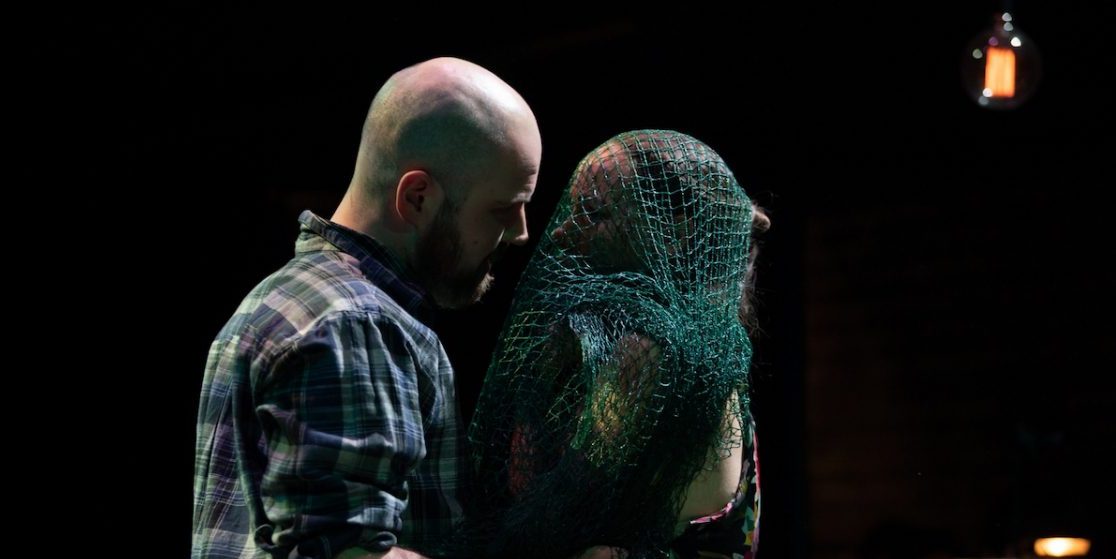Bartok’s 1918 one-act “expressionist” opera Bluebeard’s Castle is a work that is puzzling and compelling in equal measure. In this fine version – presented by Green Opera for the Grimeborn Festival – the claustrophobic studio at the Arcola proves to be an ideal space to intensify the looming sense of doom that builds through the opera as Judith opens the seven locked doors in Duke Bluebeard’s Castle. And a more significant bonus still is that Green Opera somehow manages to pack an orchestra of twelve into a tiny space next to the performance area – this provides a rich soundscape to support the two fine singers.
Judith is Duke Bluebeard’s new wife. She comes to his castle with high hopes for a happy and passionate marriage but she soon finds that his castle contains many disconcerting features including seven locked doors that he insists should remain shut. She begs that each one is in turn opened and, despite his protests, Bluebeard eventually complies until the seventh door is opened. Judith discovers the dreadful secret Bluebeard has concealed. This nightmare fairytale has offered many meanings to audiences, and critics, over the years – its dream-like fabric can be twisted into many different shapes and I am not going to offer my own interpretation because the strength of this extraordinary work is that each viewer must find their own meaning(s).
The tiny performing space of studio 1 at the Arcola is, unusually, packed with objects – a bed, a cluttered desk, a wooden chest, a stained sink, and one locked door. True to Green Opera’s mission, these objects and the cloaks and hangings that are used in the telling of the story has been salvaged and reclaimed – they work well in creating the atmosphere of timeless menace in the castle. Judith and the Duke enter the ‘stage’ from one of the gangways that the audience uses to enter the seating rows……. and the drama of the locked doors begins.
The roles of the Duke and Judith make huge demands on the singers – and April Frederick and James Corrigan rise to the challenge with style. Frederick has a fine soprano voice but, in this piece, the beauty of the voice is not so important as the way it is used to convey Judith’s growing unease and the tension between her passion for Bluebeard and her need to know his secrets. This transition Frederick handles superbly. Baritone James Corrigan is equally adept at conveying the contradictions in Bluebeard’s character – in this version he is not the murderous monster that one sometimes encounters. His despair at finding he cannot resist Judith’s determination to open the doors is strangely moving.
But almost the greatest treat of the evening is to hear the score played with such power and passion by an orchestra that is small by ‘big house’ standards but large for Grimeborn. All credit to John Paul Jennings for managing and unleashing this fine team of players and conjuring up the blood-soaked aura that the opera needs. Once again, Grimeborn shows that some operas can be near their best in the claustrophobic spaces of the Arcola. This production will be given again in Peckham later in September – it is well worth seeing.

